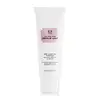What's inside
What's inside
 Key Ingredients
Key Ingredients

No key ingredients
 Benefits
Benefits

 Concerns
Concerns

 Ingredients Side-by-side
Ingredients Side-by-side

Water
Skin ConditioningMyristic Acid
CleansingGlycerin
HumectantStearic Acid
CleansingLauric Acid
CleansingPotassium Cocoyl Glycinate
Potassium Hydroxide
BufferingGlycol Distearate
EmollientButylene Glycol
HumectantAcrylates Copolymer
Sodium Cocoamphoacetate
CleansingPhenoxyethanol
PreservativeCaprylyl Glycol
EmollientPolyquaternium-39
Parfum
MaskingSodium Chloride
MaskingSclerocarya Birrea Seed Oil
HumectantTetrasodium EDTA
Linalool
PerfumingSodium Benzoate
Masking3-O-Ethyl Ascorbic Acid
Skin ConditioningPalmaria Palmata Extract
Skin ProtectingWater, Myristic Acid, Glycerin, Stearic Acid, Lauric Acid, Potassium Cocoyl Glycinate, Potassium Hydroxide, Glycol Distearate, Butylene Glycol, Acrylates Copolymer, Sodium Cocoamphoacetate, Phenoxyethanol, Caprylyl Glycol, Polyquaternium-39, Parfum, Sodium Chloride, Sclerocarya Birrea Seed Oil, Tetrasodium EDTA, Linalool, Sodium Benzoate, 3-O-Ethyl Ascorbic Acid, Palmaria Palmata Extract
 Reviews
Reviews

Ingredients Explained
These ingredients are found in both products.
Ingredients higher up in an ingredient list are typically present in a larger amount.
Butylene Glycol (or BG) is used within cosmetic products for a few different reasons:
Overall, Butylene Glycol is a safe and well-rounded ingredient that works well with other ingredients.
Though this ingredient works well with most skin types, some people with sensitive skin may experience a reaction such as allergic rashes, closed comedones, or itchiness.
Learn more about Butylene GlycolParfum is a catch-all term for an ingredient or more that is used to give a scent to products.
Also called "fragrance", this ingredient can be a blend of hundreds of chemicals or plant oils. This means every product with "fragrance" or "parfum" in the ingredients list is a different mixture.
For instance, Habanolide is a proprietary trade name for a specific aroma chemical. When used as a fragrance ingredient in cosmetics, most aroma chemicals fall under the broad labeling category of “FRAGRANCE” or “PARFUM” according to EU and US regulations.
The term 'parfum' or 'fragrance' is not regulated in many countries. In many cases, it is up to the brand to define this term.
For instance, many brands choose to label themselves as "fragrance-free" because they are not using synthetic fragrances. However, their products may still contain ingredients such as essential oils that are considered a fragrance by INCI standards.
One example is Calendula flower extract. Calendula is an essential oil that still imparts a scent or 'fragrance'.
Depending on the blend, the ingredients in the mixture can cause allergies and sensitivities on the skin. Some ingredients that are known EU allergens include linalool and citronellol.
Parfum can also be used to mask or cover an unpleasant scent.
The bottom line is: not all fragrances/parfum/ingredients are created equally. If you are worried about fragrances, we recommend taking a closer look at an ingredient. And of course, we always recommend speaking with a professional.
Learn more about Parfum